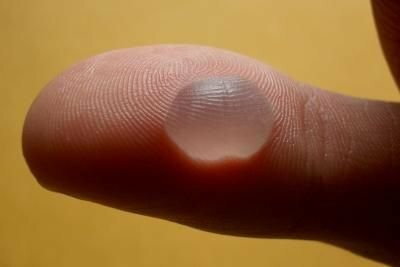Water blister on the heel
A water blister on the heel is usually caused by rubbing shoes and the resulting overuse of the skin. Proper action can prevent inflammation.

What you need:
- Adhesive plaster
- possibly Wound dressing
The skin on the heel is sensitive
- A water blister on the heel is usually caused by new shoes that have not yet been worn in. Some people get blisters very quickly, so wearing new shoes is often a problem.
- People who tend to blister the heel quickly should "break in" new shoes for short distances and get used to them. After a very short time, an uncomfortable feeling on the heel can occur, which should result in the immediate removal of the shoes.
- In order to prevent blistering, you should not wear new, unbroken shoes to partying, exercising, etc. go if you don't have a second, "harmless" pair of shoes with you.
Avoid piercing a water bubble if possible
- If a water blister has formed on the heel, the pain depends on the size. Small blisters that have little fluid in them can be protected against further irritation from shoes with an adhesive plaster.
- Then put on comfortable shoes and make sure that that band Aid is large enough to accommodate the bladder to cover. Furthermore, please make sure that the edges of the plaster do not roll up when walking and thus cause further irritation of the skin to lead. If the plaster rolls up and there is an annoying bead, change the plaster.
- Although piercing a large, painful blister of water can provide some "relief", it is best not to pierce it. The reason is that the water bladder covers the wound in a sterile manner. As soon as you puncture the bladder, it is no longer sterile and the risk of inflammation increases.
- Allow the water bladder to dry out by walking barefoot as much as possible. If this is not possible for a few days, you should always cover the bladder well and wear open-back shoes.
Shoes that are too tight? This usually causes water bubbles to form. The bladder protects the ...
How helpful do you find this article?
The content of the pages of www.helpster.de was created with the greatest care and to the best of our knowledge and belief. However, no guarantee can be given for the correctness and completeness. For this reason, any liability for possible damage in connection with the use of the information offered is excluded. Information and articles must under no circumstances be viewed as a substitute for professional advice and / or treatment by trained and recognized doctors. The content of www.helpster.de cannot and must not be used to make independent diagnoses or to start treatments.


